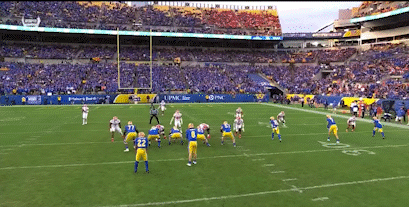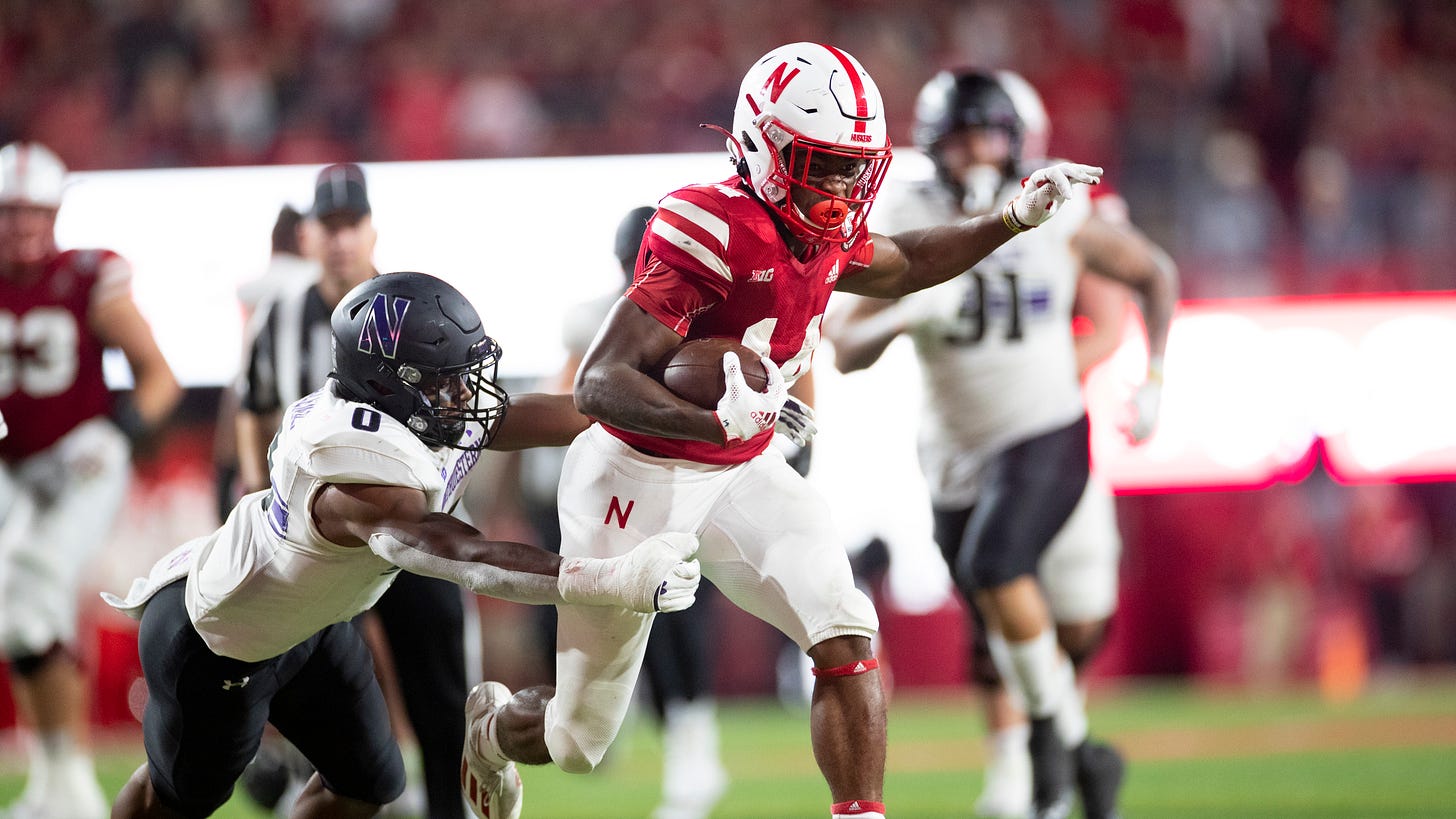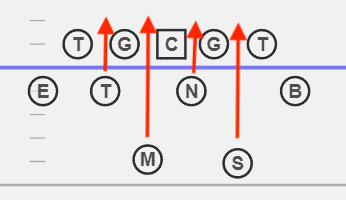The Thinking Fan's Guide To The Opener
Here are five things I'm going to be watching for against Northwestern when I'm not puking from anxiety
It’s hard to write content for a newsletter about scheme and analytics before any actual meaningful football has been played. Especially when a whole side of the ball is composed of a new coaching staff bringing in new ideas you haven’t really seen displayed yet. Spring games and offseason talk are great, but they are largely empty calories; when coaches are forced to put an actual product on the field, you find out what they really believe or want to do.
But Saturday’s season-opener against Northwestern gives us a chance to answer some of the questions we’ve had all offseason. Here are five things I’ve been wondering about and am going to be looking out for Saturday:
1. What is the offensive mix?
The most important event of Nebraska’s offseason was the addition of new offensive coordinator Mark Whipple. Coach Scott Frost, hired for his offensive acumen, gave up play-calling duties to focus more on the Husker program as a whole but has said he will still be involved in the offensive game-planning and development.
Conventional wisdom would say Whipple — an old-school, West-Coast-offense guru who’s tutored numerous successful quarterbacks at the collegiate and NFL level — will lead the passing game and call the plays, while Frost — one of the most creative and diverse spread run-game designers working — will handle the rushing attack.
Whipple, though, is known as a strong personality, and there’s a chance he just bulldozes the much younger and less experienced coach and gets COMPLETELY IN HIS BAG. I don’t think this is going to happen — at least probably not in the first game before any real adversity has hit — but I am interested to see how these two offensive styles have melded through offseason work.
As I said in my post breaking down Whipple’s possible fit after his hiring, the DNA of both offenses has quite a bit of overlap. Nebraska has used Whipple’s favored run-game concepts plenty under Frost, and its passing game has plenty of the quick-hitting West Coast concepts Whip likes. I didn’t expect many significant changes to be made to NU’s offense, just for certain dials to be turned in some different directions.
That being said, there are some things to look out for to see how much of the attack is Whipple’s and how much of the attack is Frost’s. The first is in the passing game. NU last year favored deep downfield crossing concepts off play action, whereas Whipple liked short and intermediate timing-based concepts with high-low reads and several receivers breaking in the same direction. If you’re seeing a lot of stuff like Levels, Shallow Cross or Drive, those are Whipple classics:

Nebraska ran these concepts some last year, too, just not nearly as often as Whipple did, so if you’re seeing them spammed, that’s probably a sign this is the full Whipple passing attack. If you want a more detailed breakdown of these concepts, read that offensive coordinator breakdown post or the spring game recap post.
Another tell will be in the run game. Whip’s run game was very basic; 61.6% of his called run plays in the three-game sample I watched were either straight-up Inside Zone, Outside Zone, or Split Zone. Nebraska’s attack was much more diverse and would pull in new concepts seemingly by the week. If you’re seeing a lot of pullers, triple option concepts or unique run looks, Frost is probably still heavily involved in the run game.
2. Can the interior defensive line hold multiple gaps?
NU switched its base defense last season from a standard 3-4 to what was essentially a 4-2-5 to deal with the increasing spread offensive looks it was seeing. The 4-2-5 has a lot of advantages, including increasing the amount of speed on the field and the ability to play just about any coverage shell you want, but it requires its interior defensive line to be strong inside.
The 4-2-5 NU played did not ask its interior defensive linemen to penetrate into the backfield but rather hold or control gaps. In the normal 4-2-5 setup, the 3-Technique is nominally in charge of controlling the B-gap to their side, while the nose tackle controls the A gap to their side. The Sam and Mike linebackers’ control the other two A and B gaps.
But, ideally, your line would be able to keep your ‘backers clean from offensive linemen, and linebackers also have coverage responsibilities that put them in conflict. This is especially true for NU, which primarily played zones like Cover 3 and Cover 4 that require the two inside linebackers to get immediate depth. For a 4-2-5 to be really successful, you need your defensive linemen to be able to control at least a gap and a half — especially the nose tackle.
NU had some quality defensive linemen last year able to do this — Ben Stille was quietly one of the highest-graded PFF interior defensive linemen in the country over the past two seasons — but a combination of graduations and transfer portal attrition left the group thin in the offseason. NU already has a solid proven interior guy in Ty Robinson, and appears to have a couple rotational pieces in the massive Nash Hutmacher and walk-on Colton Feist. They also went out and added former Texas Tech starter Devin Drew and former Alabama rotational player Stephon Wynn Jr. from the transfer portal to play on the inside.
This revamped group’s ability to play multiple gaps is the biggest question to me on the defense. Northwestern has never been a great rushing team or offensive line, so if they’re getting moved off the ball, that’s likely a bad sign. What to watch for: If you’re seeing interior defensive linemen on standard downs holding up offensive linemen stationary with their arms extended, that’s good. If you’re seeing guys being moved backwards … we’re in trouble.
3. Can any offensive tackle pass protect?
NU’s entire offensive line got a lot of deserved grief last year, but most of the problems stemmed from the two tackles’ pass protection; the whole line was a decent run-blocking unit and interior of the line held up fine in pass pro. But on the season, left tackle Turner Corcoran and right tackle Bryce Benhart allowed a combined 54 pressures; Nebraska’s three other starting linemen allowed a combined 17. Corcoran also finished the season with a 0.0 pass blocking grade from PFF.
While the most important predictor of offensive line success is returning experience and I think Husker fans are generally underrating how much the tackles could grow after a season of live bullets and another offseason of development, last season was so bad, I’m not sure if we can expect to get competent pass protection from them. That’s especially concerning in a conference that rolls out freakshow rusher after freakshow rusher and now that NU’s quarterback is no longer a good athlete who could bail out poor pass protection with his mobility.
A great way to tell if the staff trusts the tackles’ pass protection is to see how often they leave a back or tight end in to chip or protect on obvious passing downs.

Both Frost’s and Whipple’s schemes want to get five eligible receivers out at all times. If NU is having to do stuff like this that slow down the play, the offense will be limited.
4. Who’s playing nickel?
One of the keys to Nebraska’s defense last year was nickel safety JoJo Domann’s ability to also play a convincing 3-4 outside linebacker. This allowed NU to not have to sub him when going into heavier personnel and also gave it a Swiss army knife it could use to disguise structure, blitzes, and coverage.
But Domann graduated and will need to be replaced with at least competent play if NU is going to keep up its defensive progress. There’s no obvious heir on the roster who can do both jobs — I think it’s more likely the Huskers have a designated nickel safety and a separate outside linebacker than one person capable of doing both jobs. This will give opposing offenses a tell on NU’s personnel, but much more important will be how the new nickel executes.
On top of being asked to cover wide receivers in space, the nickel in a 4-2-5 has key contain responsibilities on strongside runs and edge responsibilities on weakside runs. This is especially important now considering the recent rise in prevalence of the “Big Slot” — larger wide receivers in the slot who are capable of blocking linebackers and safeties; think guys like David Bell — and considering the amount of weakside outside zone that gets run in the Big Ten. The Blackshirts need a strong player at nickel to hold up in this style of defense.
The potential starting options based on camp chatter include Isaac Gifford, who started the final two games at nickel after Domann got hurt; Chris Kolarevic, a transfer from Northern Iowa who played inside linebacker for the Huskers last year; and Javin Wright, a very promising player early in his career who had to sit for two seasons after developing blood clots. Gifford has demonstrated good zone coverage instincts in his career but is only 200 pounds. Kolarevic is probably the better option against the run but struggled in coverage last season with considerably easier assignments than what he would face split out. Wright is probably the most physically talented of the three but hasn’t played much football in recent years.
5. Are starters playing special teams?
There was a lot of offseason talk about a team-wide recommitment to special teams after a 2021 campaign that was truly one of the most pathetic displays of the third phase in recorded history. But there has pretty much always been positive offseason talk regarding special teams under Frost and the special teams have pretty much always sucked (except that one time the kicker was randomly first-team All-Big Ten).
Specialist performance is sort of its own thing that I don’t know a lot about, so the clearest way to see if people are actually serious about special teams are to see how many starters and key backups are investing into playing them. Frost used starters on special teams at UCF and said he would at Nebraska when hired and then just … never did. I’d like to see this happen.






